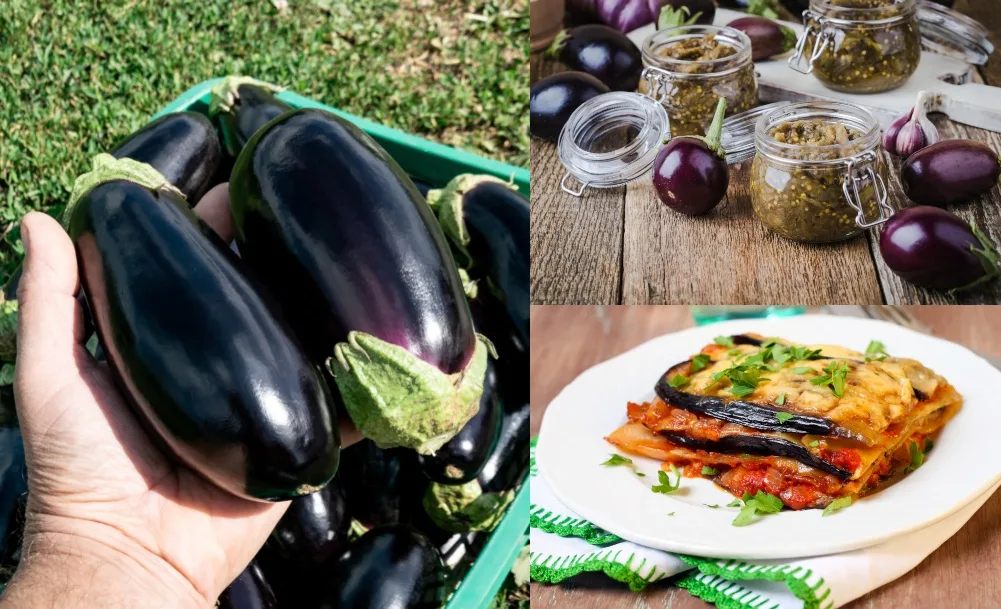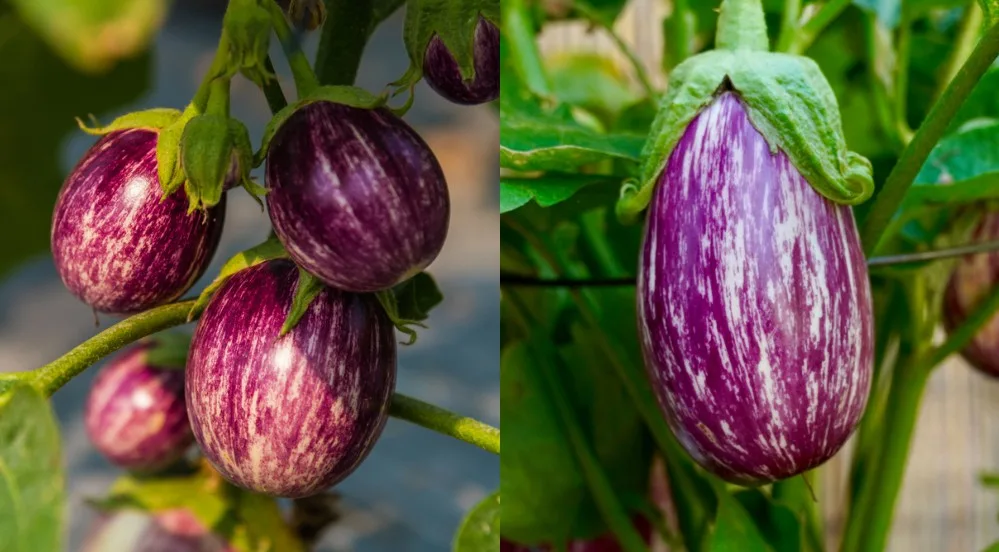
Eggplant – you either love it or hate it. This misunderstood vegetable has very few tepid fans.
Even those of us that adore the creamy taste of perfectly cooked eggplant rarely think to plant them in the garden.
They have a reputation for being a rather fussy vegetable. Knowing a bit more about the needs of these lovely plants makes growing them successfully much easier.
Whether you grow them in your garden or a container, eggplants can be an excellent addition to your homegrown harvest each year.
Eggplants are native to Asia and a member of the nightshade family, like tomatoes and peppers. They are a fruit, even though we generally think of them as a vegetable. In other parts of the world, eggplants are known as aubergine or brinjal.
All things considered, they are one of my personal favorites to plant in my garden each year. I hope you’ll make room for these wonderful fruits this growing season.
These bushy plants require considerable space in the garden, but some varieties do well in containers too.
Eggplants are heat-loving and do best in areas with long, hot summers. However, that doesn’t mean places with shorter growing seasons have to do without.
There are some excellent fast-maturing varieties that will give you a lovely yield of fruit as well, like the slender and delicious Japanese eggplant.
Starting from seed
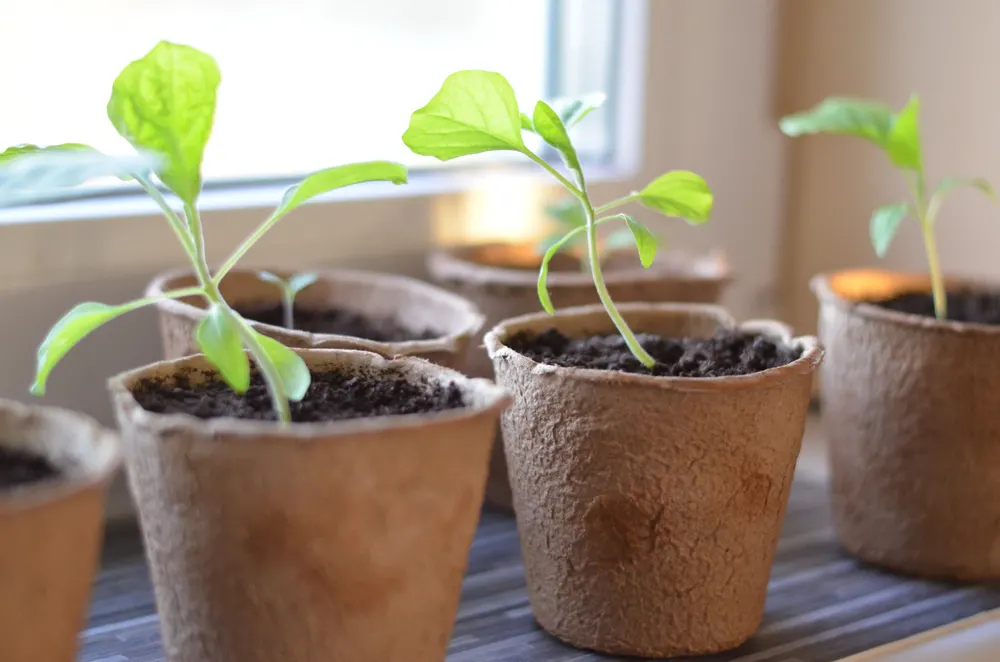
I would recommend planting from seed if you want a variety beyond the usual Black Beauty, which are the most commonly found eggplants for nursery starts.
However, as their popularity grows, you can often find Japanese/Asian or even white eggplants in nurseries now.
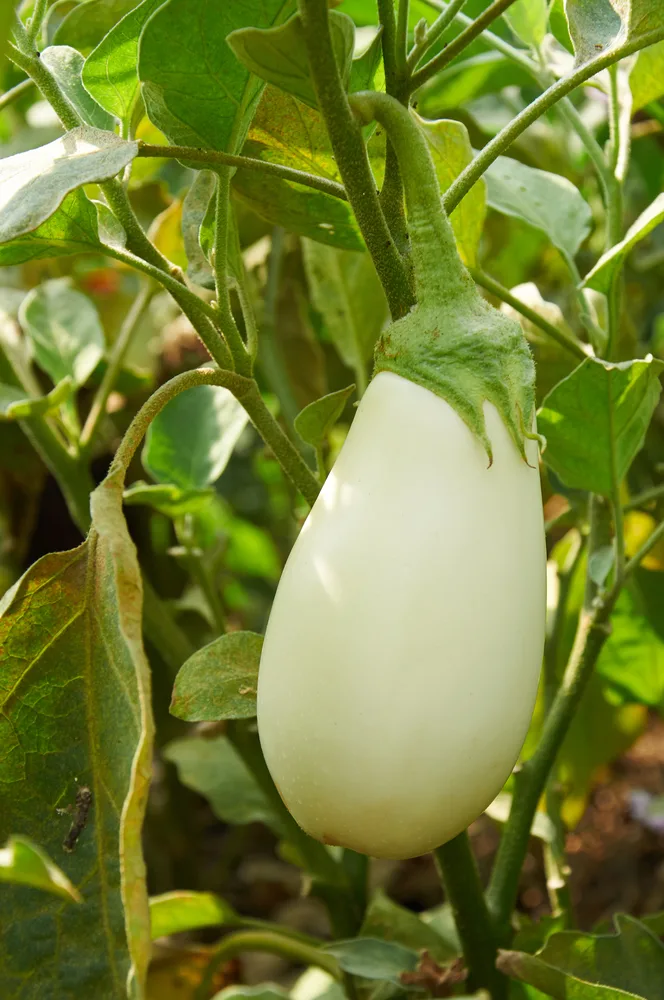
There are quite a few beautiful hybrids and heirloom varieties available; if you’re willing to grow them from seed, these are great for anyone looking to try something new and different.
Baker Creek Heirloom Seeds offer a number of eggplant varieties to try growing yourself.
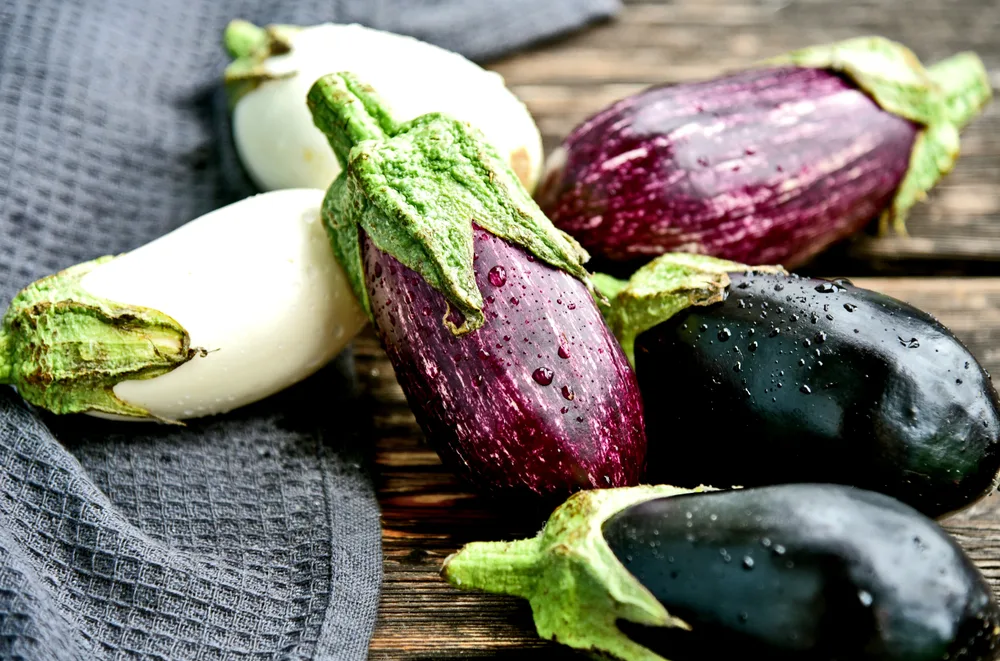
To start eggplant seedlings, you’ll want to plant the seeds between 8 to 10 weeks before you plan to transplant them outside.
Sow one seed per seedling pot about ¼” deep. Water and keep them in a warm and bright place in your home. They will need at least 6-8 hours of light a day. You can always use a grow light to help them along if you don’t have much natural light in your home.
Cover the pots with a dome to keep them warm and moist until the seedlings are around 2” tall. Stake these little guys early!
When to transplant
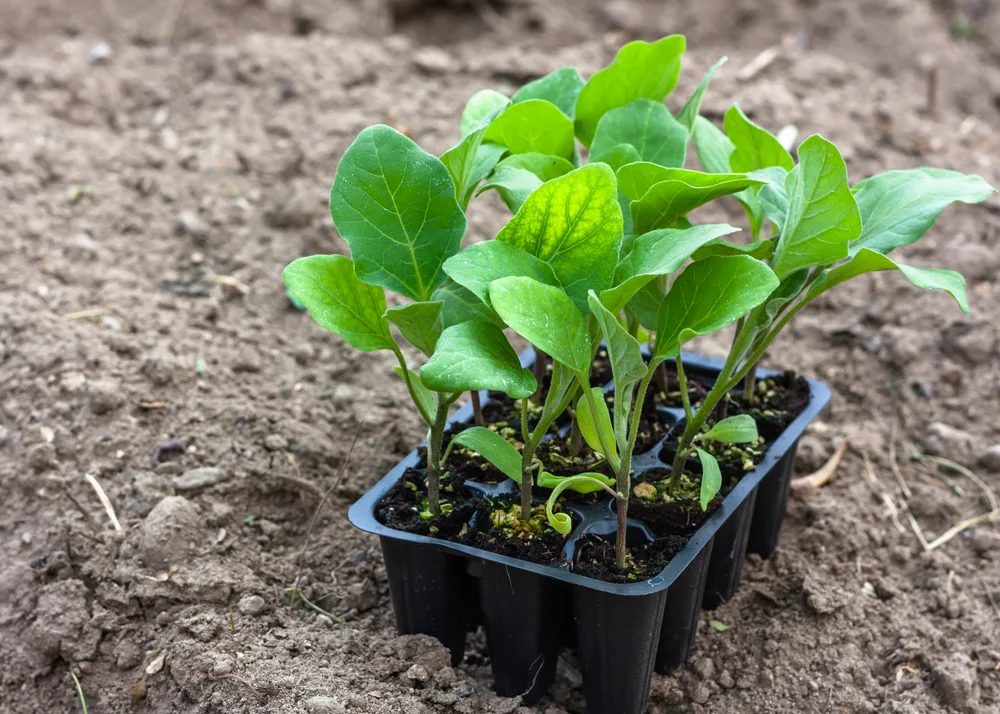
Eggplant seedlings shouldn’t be planted outdoors until all danger of frost is past, and the ground has warmed up significantly. Check the frost dates for your area and plan accordingly.
If you want to get a jump on the season, put a layer of black landscape cloth on your freshly tilled garden and tuck the edges down into the dirt. This will help to warm the soil quicker. However, later planting can help ward off pests, so it’s something to consider.
Before you can transplant your eggplant, you’ll need to harden them off.
You can do this by moving them to a cooler area in your home, as well as by putting them outdoors for a few hours at a time during the day. Slowly lengthen the time they spend outdoors and be careful not to let your seedlings dry out.
Soil and feeding
Eggplants do best in neutral to slightly acidic soil, between 5.5 – 7 pH.
When your plants are small, be sure to feed them a nitrogen-rich fertilizer. Usually, an all-purpose fertilizer is sufficient.
However, once they start to produce flowers, you need to cut back on the nitrogen and switch to a vegetable-specific fertilizer, otherwise you will end up with large, bushy plants, but no fruit. The Old Farmer’s Almanac Tomato & Vegetable Plant Fertilizer fits the bill.
Eggplants flourish if they are fed magnesium. An easy and all-natural way to do this is to mix a tablespoon of Epsom salt in a gallon of water and water your plant with this solution.
You can feed them the Epsom salt once a month. (This works great for tomatoes and peppers too!)
Sun and space requirements
Eggplants need quite a bit of room to grow. Plant them where they won’t be shaded out by other plants and give them at least 18” of space away from other plants.
Stake and cage them early. I like to use these little reusable zip ties when staking my plants because they are gentle on the stalks, and I can reuse them year after year.
Take a look at our article sharing 38 ideas for supporting tomato plants. You’ll find lots of ideas that work for eggplants too.
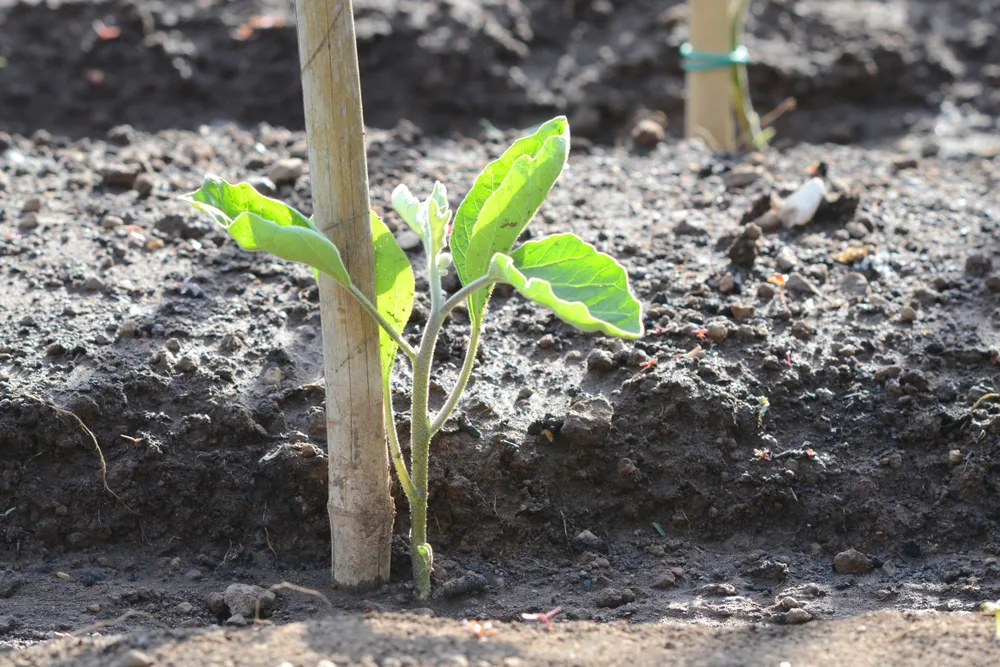
As far as companion planting goes, eggplant does well when planted with other nightshades, like peppers or tomatoes, but again, make sure they won’t be in the shade of taller plants.
Put a layer of organic mulch around their base to help keep moisture in the soil. If you want a healthy and prolific eggplant, your best bet is to give it its own space where it can soak up the sun.
Growing eggplants in a container
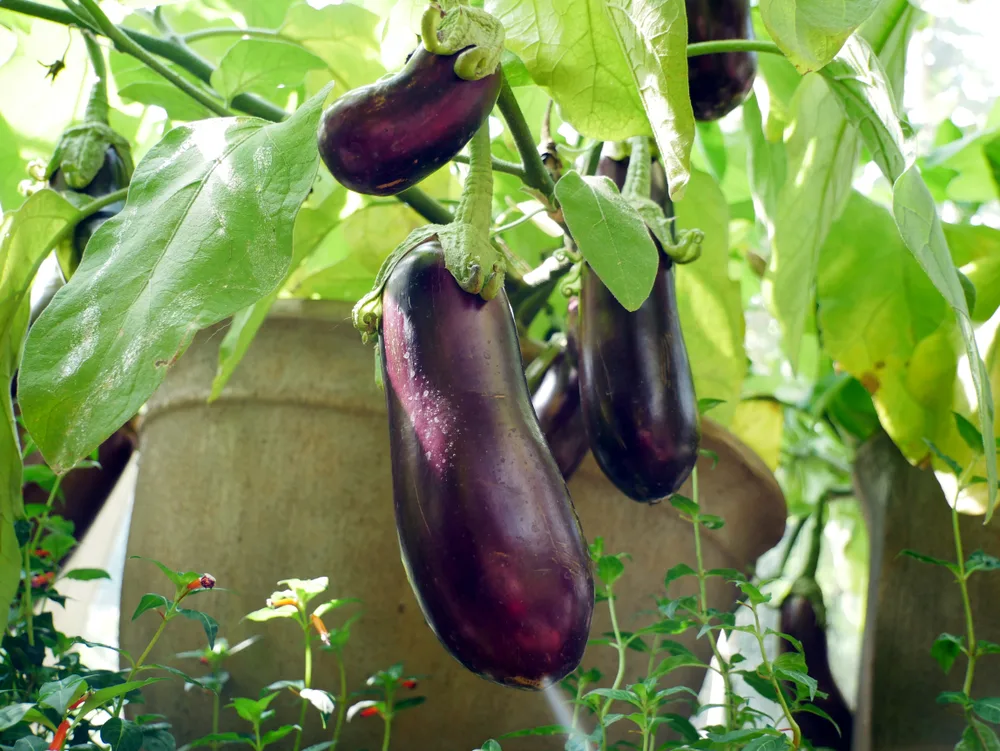
If you don’t have room in your garden, or container gardening is your thing, there are a few varieties of eggplant that do well in containers.
The Japanese/Asian eggplants are an excellent choice for container gardening. They are small and develop quicker, and they are pretty disease resistant as well.
The Japanese eggplants are my personal favorites because their skin is thinner, and they yield a more tender fruit. Perfect for stir-fry!
I’ve had good luck with growing them in containers. Fairytale, Bambino, and white eggplants are all great choices for container planting too.
If this is the route you wish to go, you will need a pretty large container. A 5-gallon bucket is the minimum I would recommend for growing eggplants.
If you have something more significant, use it.
You’ll need a good, well-draining potting soil. A good mix would be two parts potting soil, one part sand, and one part compost.
Make sure your pot has drainage holes in the bottom.
You’ll want to put a layer of organic mulch around the plant as well to help seal in moisture.
Be sure you put a cage on eggplants grown in a container. They need the structure as they fill in. Cage them before they get too big to avoid snapping branches off. Your typical tomato cage works just fine.
Eggplants grown in a container will need fertilizer more often and water daily if not several times a day.
Pollination
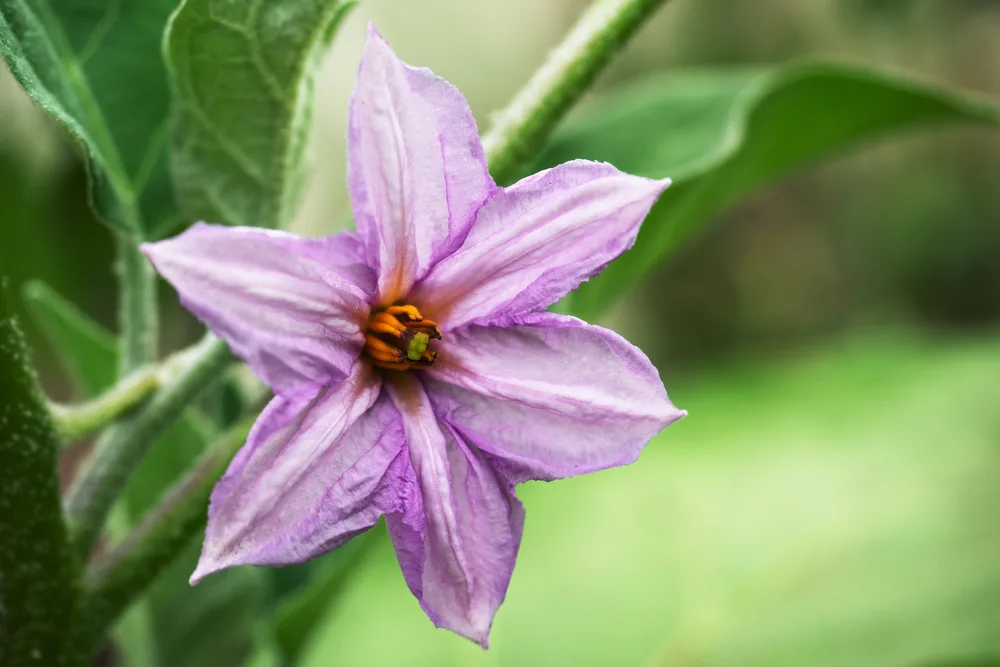
Bees are your eggplant’s best buddies; unfortunately, with the bee population steadily declining, you may find it helpful to hand-pollinate your eggplant flowers.
You can do this by gently brushing the stamen with a soft brush.
Here’s our guide for hand-pollinating tomato plants. You can use the same method for eggplants.
Another effortless way to hand-pollinate is to use an old battery-powered toothbrush and lightly touch the tip of the toothbrush to the flowers. The vibrations will encourage the release of pollen onto the stamen.
Pruning for fruit production
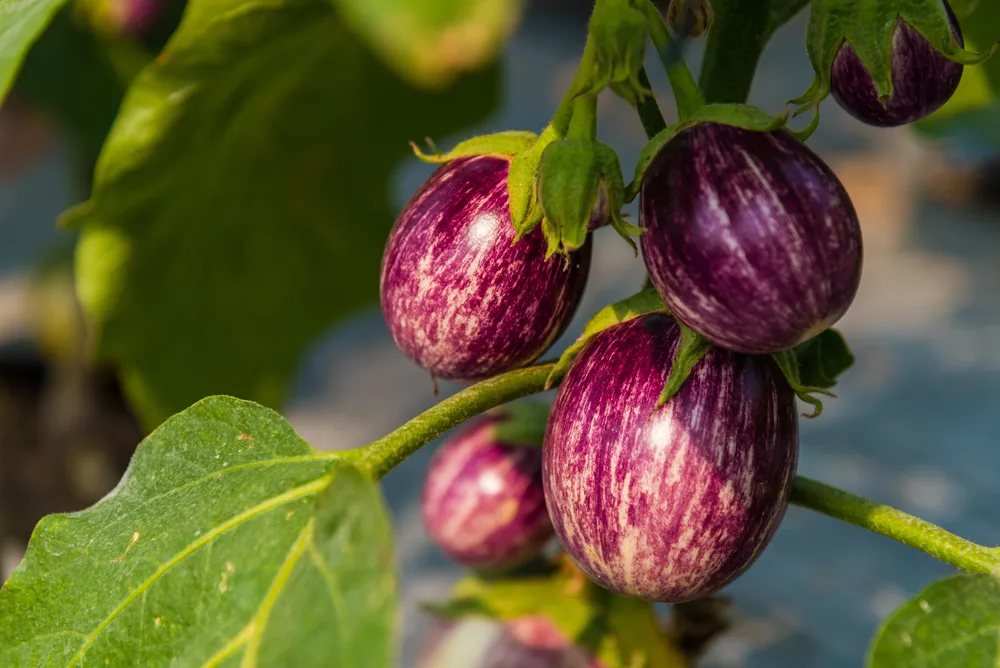
If you want a good yield of fruit, a little trimming will help you along the way. You can do this once the plant forms the first flower.
You’ll notice two or three main branches leading off the main stem. Usually, the first flower forms around this crotch, where the plant branches off of the main stem. Trim off any leaves and stems below this crotch.
The remaining growth above this point will continue to produce flowers. You may need to trim any regrowth of suckers below this point throughout the season.
Trim off any yellowed leaves as well. You want to encourage the plant to put its energy into fruiting rather than growing more foliage.
Pests and problems
One of the quickest ways to stress out eggplants is not enough water. This can lead to yellowed leaves and low fruit production.
Check your eggplant and water them often. Watering frequently is especially important if you are growing them in a container, you may need to water your plants several times a day depending on the weather.
Eggplants are susceptible to blossom end rot like other members of the nightshade family. You can usually ward this off at the beginning of the growing season by adding a calcium-rich soil amendment such as bone meal or eggshells before you plant.
Flea beetles are one of the most common pests associated with eggplants. They will chew tiny holes in the leaves of your plant.

While larger, well-established plants can handle it, flea beetles will quickly destroy small seedlings.
There are a few things you can do to prevent flea beetle damage.
At the end of the growing season, unearth the larvae by tilling up your garden. Before you plant in the spring, put down black landscape cloth at the beginning of the growing season; this keeps the larvae from developing.
Lightly dust the leaves of the plants and the ground with diatomaceous earth.
Plant a trap crop like radishes nearby to draw the beetles away from your eggplant. (Drat, I love radishes too!)
Lace bugs can wreak havoc on your eggplant’s foliage as well. Use the methods mentioned above. Remove infested leaves. You’ll likely be removing lace bug eggs with them.
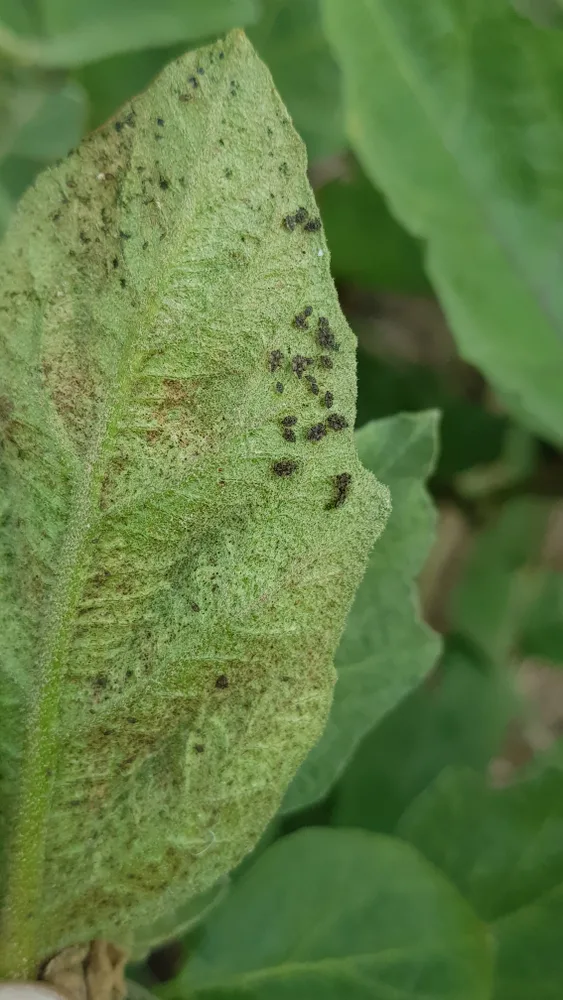
When to harvest eggplant
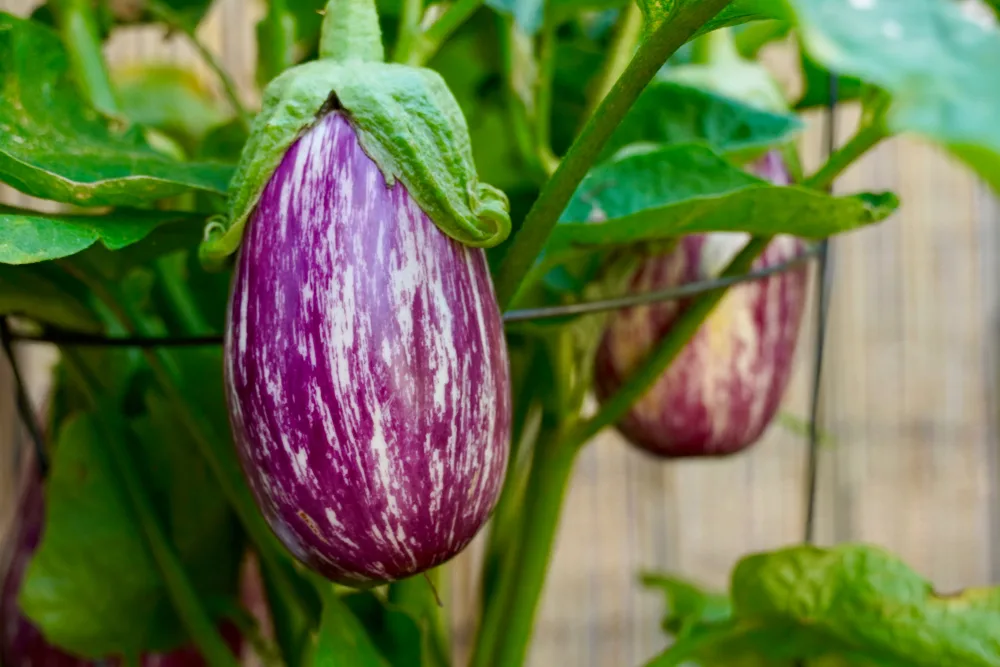
With a little attentiveness, you can expect to harvest beautiful eggplant around 65-80 days after transplanting.
Eggplant becomes bitter the larger it grows, so always pick your fruit when it’s smaller.
Depending on the variety, pick your fruit when it’s between 4-6” long.
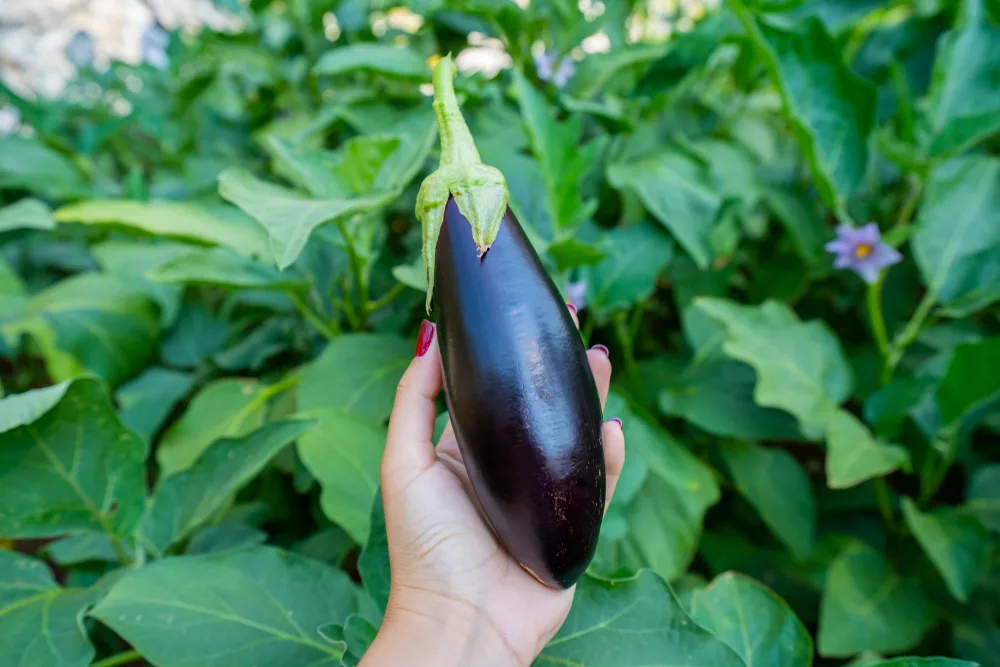
Cook your eggplant soon after picking for peak flavor.
With proper care, your eggplant will keep fruiting right up until frost.
If you love eggplant, growing them yourself is worth a little extra fuss. As with most produce, you can’t beat the texture and flavor of something freshly-picked straight from your garden.
Happy gardening!

Get the famous Rural Sprout newsletter delivered to your inbox.
Including Sunday musings from our editor, Tracey, as well as “What’s Up Wednesday” our roundup of what’s in season and new article updates and alerts.



